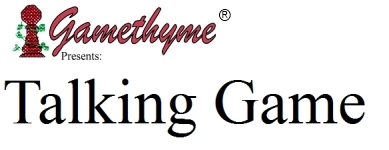I was in Group Two. We had Barony and Starfighter and Metal Adventures and a few others. One of the other groups had this little game called Deus, and I got there early one day and had the opportunity to play. I immediately regretted that it wasn't in my group.
The games we had were all excellent games - I know I've discussed Metal Adventures at least once before - I need to do so again, because my play at GenCon highlighted some things that I'd been missing and made it a game I need to play more. And I've discussed Barony here, too. Starfighter was the best game in the booth last year. I've said that a ton of times, and I stand by that statement. I should probably spend some time and write it up here.
But Deus was fun.
Last year, we had two tableau-building games in the booth with very similar themes: Deus and Elysium. I'd worked on Elysium, and had received my copy well in advance of GenCon, but I hadn't seen Deus until the show. Despite the similar theme and the tableau-building mechanism, they are very different games that I would play with different groups of people.
Deus is the simpler of the two. Please remember that "simple" and "bad" are by no means synonyms, and anyone who tries to tell you that they are is wrong.
In Deus, you're placing buildings on the a shared board in an attempt to earn victory points. Every time you place a building, you also trigger a series of card actions (depending on the number of those buildings you've played in the past).
You will re-fill your hand when you run out of cards or when you make an offering to the gods rather than constructing a building.
There are six types of building that can be constructed, each of which has its own "theme." Maritime buildings, for example, let you turn resources into money or victory points. Or let you purchase resources for money. Each building has a cost to build that is listed in goods. There are four goods in the game - clay, stone, food, and timber.
When you construct a building, there are four steps involved:
- Pay the cost to the bank. If you don't have the goods necessary, you can pay four money for each missing good.
- Move the wooden piece representing the building from your tableau to the board. It can go to any space you already control or to any adjacent space (with a few restrictions - for example, no space can hold two identical buildings and only maritime buildings can be placed in the water). If you don't have a building in your tableau, you can't play that type of building. You start with two in each column and three off-board.
- Place the card representing the building in your tableau. It'll go on top of a column of the same type of building, staggered so that you can read the action of the building.
- Start at the bottom of that column and trigger the action of each building in that column (including the one you just played).
Here is a tableau belonging to an opponent across the table:
The column with four buildings that is second from the left? Those are military buildings. This is a player who has pursued a fairly militaristic strategy. She's played four military buildings and has the fifth ready to play on the board. The second from the right, there, is production buildings. She's only built one, but has moved all four to her board.
Each building also thematically ties to a different god. Maritime buildings tie back to Neptune, production to Ceres, science to Minerva, and so on. This becomes important when you can't (or don't want to) play any of the cards in your hand - you can sacrifice your hand to one of the gods.
Each god (or goddess) will refill your hand to five cards, but they also have an additional effect. Minerva, for example, gives you an extra card for each card you sacrifice. Neptune gives you gold for each card you sacrifice. They also allow you to move one of your buildings from the supply to your tableau for later use. In fact, there is no way to win this game without sacrificing at least a few times.
Here's the catch, though: to sacrifice to Neptune, there needs to be a Neptune card in the sacrifice. So you're giving up potentially great cards to prep for future turns.
The board features five terrain types. Swamps, mountains, forests, fields, and barbarian villages. Barbarian villages start out with victory points that you can take from them, either through military action or by surrounding them on the board.
The game ends at the end of the round when one of two things happens - the last temple is placed on the board or the last barbarian village is conquered. And then players add the VPs taken during the game together with VPs given by their temples, and the players with the most of each resource will gain VPs for that resource as well. Highest score wins.
As I said: It's not a complicated game. It's simple enough that you can teach it fairly quickly, but there's enough going on that it maintains a fairly high replayability. There's not a ton of direct player interaction (a few military cards allow you to steal from nearby opponents), but there is a lot of jockeying for position on the main board.
Next week, I'm going to write about Elysium, and I'll probably throw in a few points of comparison in the process.



No comments:
Post a Comment